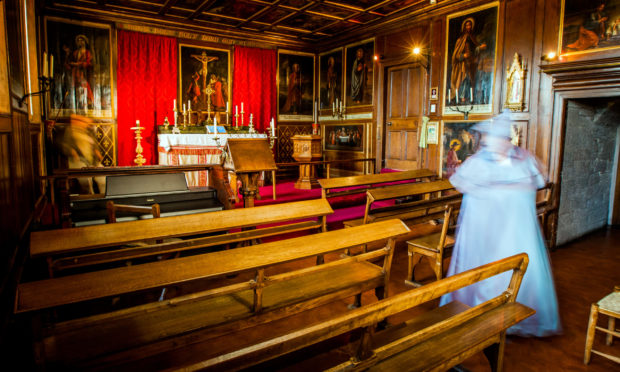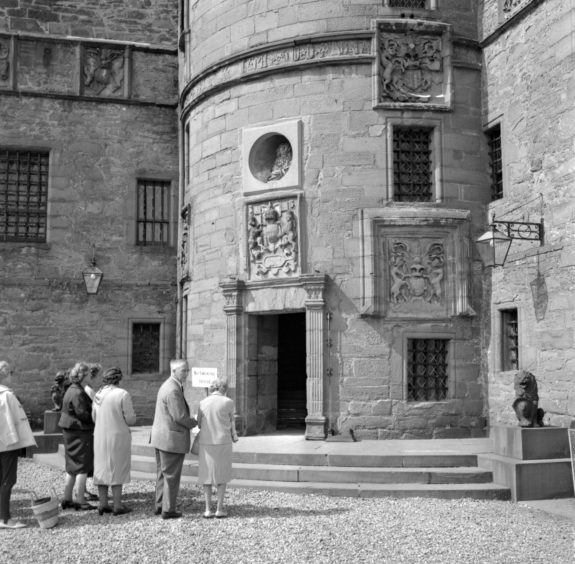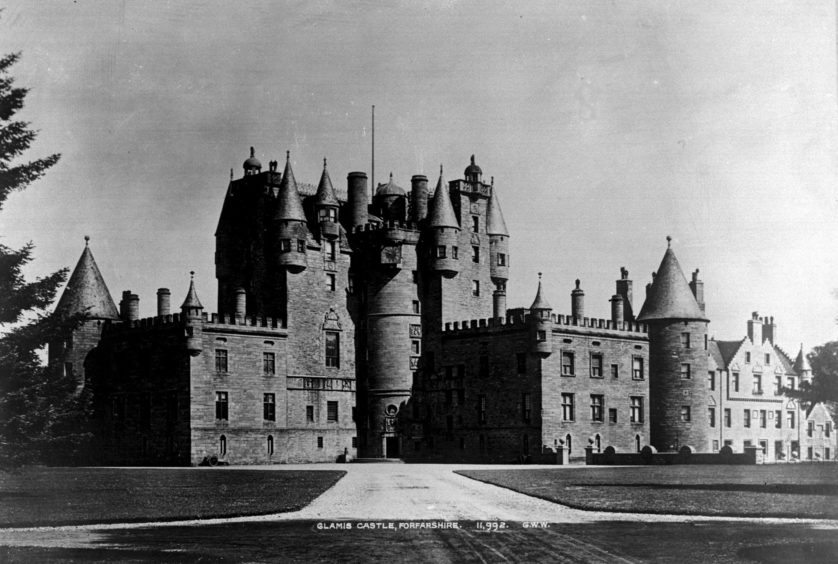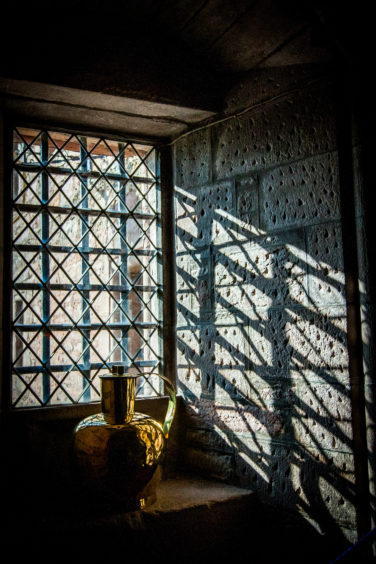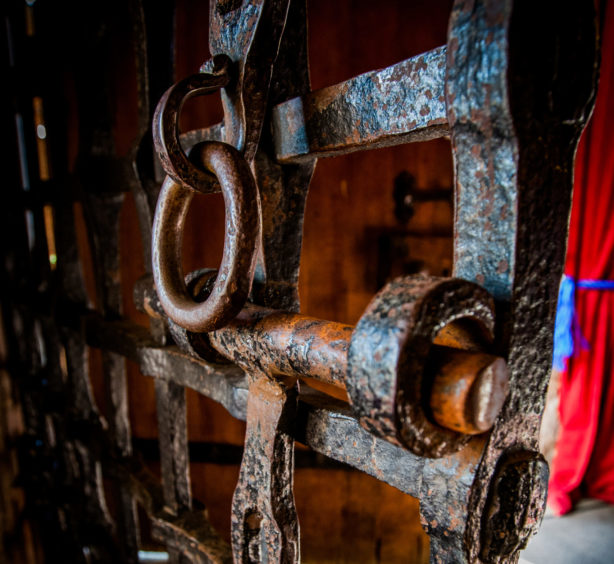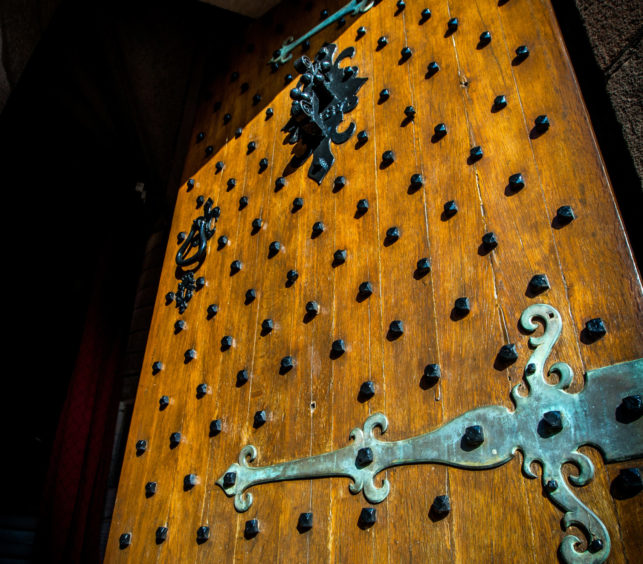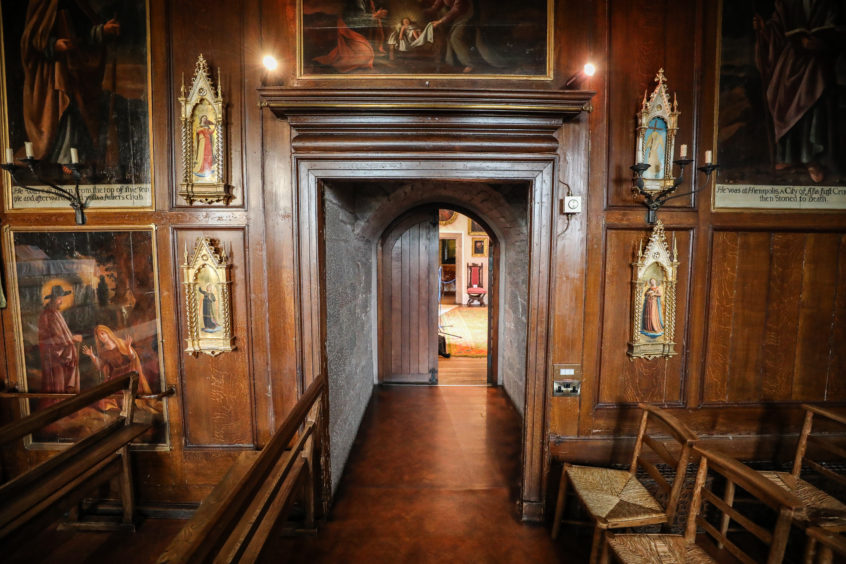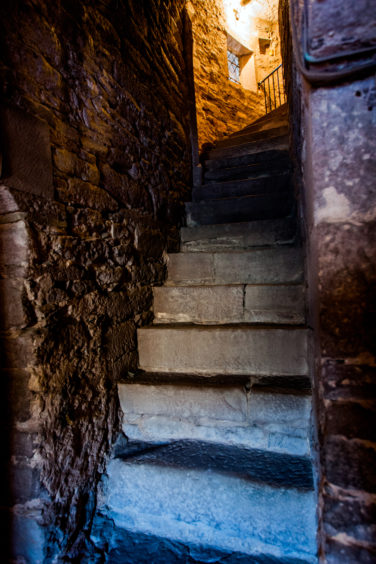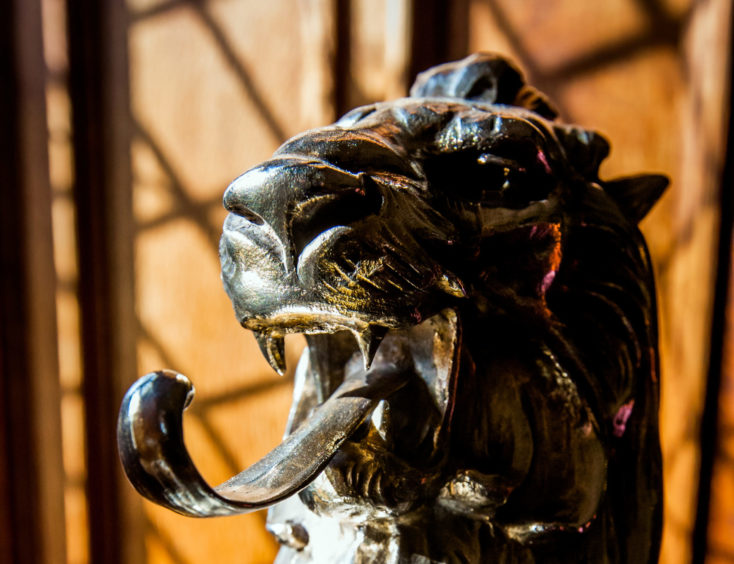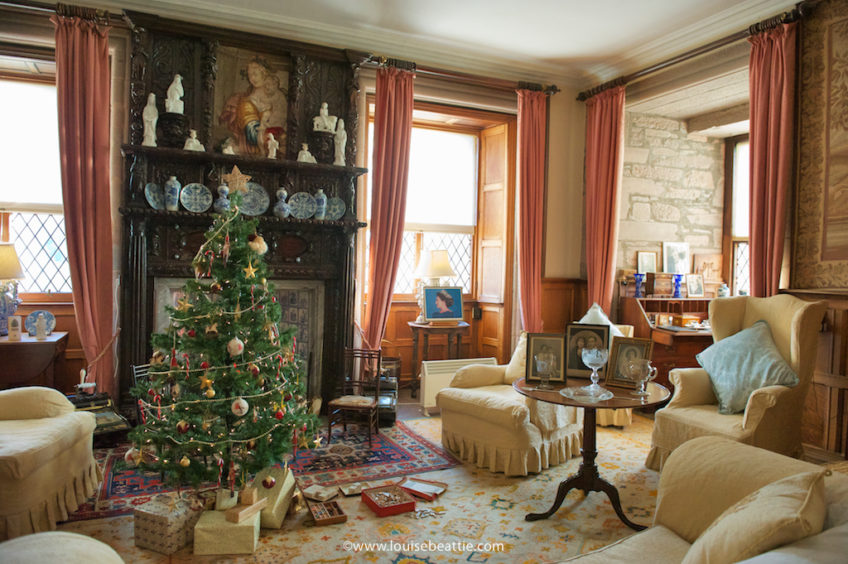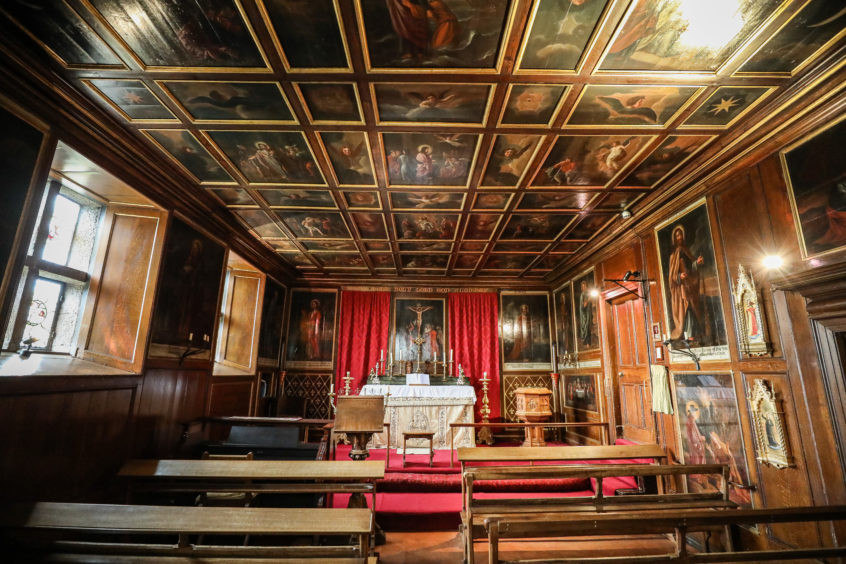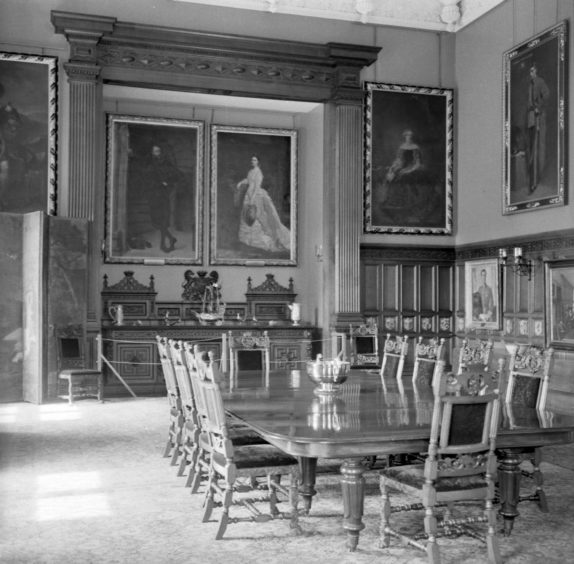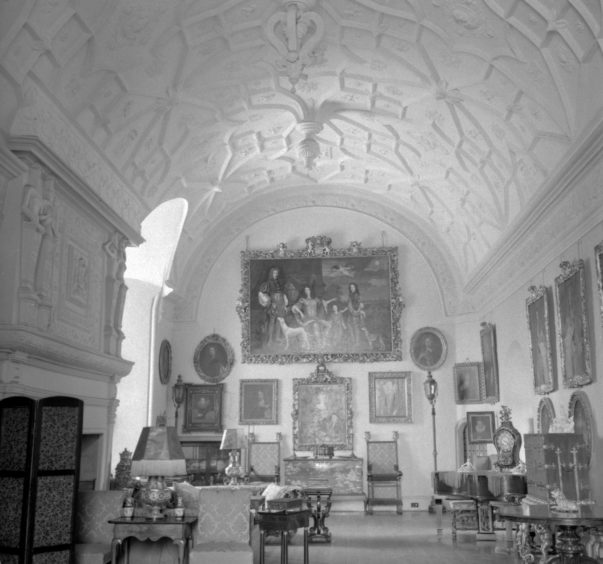In the second part of our feature on Glamis Castle, Gayle Ritchie investigates the stories behind the ghosts and ghouls which stalk the corridors
When it comes to ghost stories and horrible history, Glamis Castle boasts a veritable pick and mix.
Reputed to be the most haunted castle in Scotland, the turreted fortress hides many dark family secrets.
The Queen Mother, who spent much of her childhood at Glamis, was believed to have seen a fair few ghosts herself.
Indeed, some of the rooms associated with her have spooky tales – including the ghost of a young servant who was once badly treated which appears outside her bedroom.
There’s a room called the Hangman’s Chamber, believed to be where a butler once hanged himself.
And then of course, there’s the Monster of Glamis, the Grey Lady, the Tongueless Woman and Earl Beardie.
Here we explore some of the castle’s most spine-chilling stories…
The Monster of Glamis
“If you could even guess the nature of this castle’s secret,” said Claude Bowes-Lyon, 13th Earl of Strathmore, “you would get down on your knees and thank God it was not yours.”
The current castle building was constructed in the 15th century, around a central tower whose walls are 16ft thick in places.
Although Glamis has been the family seat of the Strathmore Earls since then, by the late 18th century it lay largely empty, its owners preferring to live somewhere less draughty, isolated and melancholy.
In the family’s absence, Glamis was left in the care of a factor, and it was to this factor that a young Walter Scott applied in 1790 to spend a night in one of its rooms.
Scott became the first of several writers to note the castle’s oppressive atmosphere.
“I must own,” he wrote in an account published in 1830, “as I heard door after door shut…I began to consider myself as too far from the living and somewhat too near to the dead.”
The great novelist also reported that Glamis was said to hide a secret room.
Within half a century of Scott’s visit, rumours began to circulate that this hidden chamber concealed a captive – a prisoner who had been there all his life.
By the 1840s, reports claimed the chamber concealed a “monster” who was the rightful heir to the title and property, but who was “so unpresentable” that it was “necessary to keep him out of sight and out of possession”.
It was generally believed that this “monster” must have been a member of the Bowes-Lyon family.
Various researchers insist the prisoner was Thomas Bowes-Lyon, a son of Thomas, Lord Glamis and his wife (who were the great-great grandparents of the current Queen).
Official records show that this child died on the day he was born, October 21 1821, but there are those who say this was not the case.
What if that son had in fact lived on, hidden away somewhere inside the castle?
By the second half of the 19th century it was often reported that the child had been born so hideously twisted in body that he could never be allowed to inherit the title.
Some accounts rather unsympathetically refer to the “monster” as “a human toad” and a “flabby egg”.
A detailed description emerged early in the 1960s, when the writer James Wentworth-Day spent time at Glamis while writing a history of the Bowes-Lyon family.
From the then-Earl and his relatives, Wentworth-Day heard the legend that the monster – the heir – was “a creature fearful to behold…a deformed caricature of humanity…his chest an enormous barrel, hairy as a doormat, his head ran straight into his shoulders and his arms and legs were toy-like”.
And yet, “however warped and twisted his body, the child had to be reared to manhood, kept safe and occasionally exercised” on the castle parapets, out of sight. This job was supposedly given to the factor.
The monster’s suite of rooms were said to have been bricked-up after his death.
Thereafter, he was said to haunt the battlements and grounds.
There’s also a story that guests staying in the castle once hung towels from the window of every room in a bid to find the monster’s bricked-up suite. However, when they stood outside and looked at the castle, several windows were apparently towel-less.
The Tongueless Woman
Another spirit of Glamis is the ghost of the woman with no tongue.
This chilling apparition has apparently been seen wandering around the grounds pointing to her badly wounded face, blood spilling from her mouth.
She has also been seen looking out from a barred window within the castle.
The story goes that she was a serving maid who stumbled on a terrible secret, known only to the incumbent Earl.
When she threatened to expose it, the Earl ordered guards to cut out her tongue and then killed her.
The Grey Lady
The Grey Lady of Glamis haunts the family chapel and the clock tower of the castle.
She is believed to be Lady Glamis (Janet Douglas), burned at the stake for being a supposed witch in 1537.
She was accused of poisoning her first husband John Lyon (Lord Glamis) upon his death in 1528, but she was cleared of the crime and free to marry her second husband Archibald Campbell of Skipness.
However, in July 1537 she was accused of planning to poison King James V of Scotland and communicating with her brothers, who were part of several conspiracies against the King.
Although the allegations were clearly false, she was sent to Edinburgh Castle dungeon.
James could not find any evidence to convict her, so he tortured her family and servants in a bid to “find the truth”.
Janet was later convicted and burned at the stake on July 17 1537 at Castle Hill, Edinburgh.
Earl Beardie
One of the more infamous ghosts of Glamis Castle is that of Alexander Lindsay, 4th Earl of Crawford, also known as Earl Beardie.
He was supposedly a cruel and twisted man who drank heavily.
It’s alleged that he once had a black servant stripped naked and forced to run around in the grounds for his and the other Earls’ entertainment.
This “entertainment” was actually a hunt, and the poor man was chased down by Earl Beardie, his guests, and their hunting dogs and torn apart.
Earl Beardie’s presence has been seen, heard, and felt all around the castle.
Reports of children wakening in the middle of the night only to see a dark figure looming over their beds have been noted.
The legend goes that Earl Beardie was visiting the castle one Sunday night and upon returning to his room, he was shouting in a drunken rage for someone to play cards with him.
Nobody wanted to take him up on his offer on a Sabbath, so he raged that he would play with the devil himself.
Shortly after this utterance, there was a knock at the door and a tall gentleman in a long dark coat appeared, offering to play cards.
The two men retired to a room and slammed the door shut.
A great deal of swearing and shouting could be heard coming from the room.
One of the servants apparently looked through the keyhole to see what all the commotion was about and found himself blinded in one eye by a bright beam of light.
The mystery man is reported to have been be the devil, having won the Earl’s soul in a game of cards, and condemning him to play until Doomsday for daring to play cards on the Sabbath.
Sounds such as shouting, stomping feet, banging doors and swearing are all reported to come from the west tower of the castle – the alleged site of the card game.
There have also been reports of residents and guests spotting a bearded man wandering the castle, and others have described being touched by the spectre itself.
The Hanged Butler
The Hangman’s Chamber is never used these days. It is said to be haunted by the ghost of a butler who hanged himself there.
The African Servant Boy
The ghost of a little African boy has been witnessed sitting on the stone seat by the door of the Queen Mum’s bedroom on several occasions.
He’s thought to be the ghost of a servant who was treated unkindly at Glamis in the middle of the 18th century.
This mischievous lad is reputed to trip up passersby outside the Queen Mother’s bedroom. And people who have slept in a small dressing room off the main bedroom have often felt their bedclothes being pulled off .
The bedroom has now been converted into a bathroom.
The haunted cup
Be wary if you take a drink from the Lion Cup in the castle. This silver vessel, in the shape of a lion, holds nearly a whole bottle of wine and visitors were often made to drain the cup in one go before they left the building.
There’s a shadowy tradition that the cup has brought bad luck to the castle and its resident family, though no-one knows where the cup came from or why it has such a sinister reputation.
The deadly stream
The River Dean is little more than a burn or stream, but locals called it the “Dowie” Dean, meaning “doleful” or “sinister”.
A popular rhyme once proclaimed that this river took a human life each year.
The Dowie Dean, it runs its leane [alone], and ilka year it taks eane’.
Another version says that it took a life one year, then spared a life the next year.
A third version insisted that the Dean only killed someone by drowning once every seven years.
The haunted chamber
This legend dates back to 1486, when members of the Ogilvy clan sought shelter from Lord Glamis as their enemies, the Lindsays, were in pursuit. Lord Glamis admitted them to the castle and told them to hide in a chamber.
What the Ogilvys didn’t realise was that Lord Glamis was in fact great friends with the Lindsay clan.
Having locked the Ogilvys in the chamber, he left them to die without food or drink.
A few years later, the Earl of Strathmore was disturbed by noises coming from the walled-up chamber and broke in to see what the cause was.
Inside he discovered piles of skeletons which lay twisted and contorted in the last agonies of starvation.
Some are even thought to have died in the act of eating the flesh of their relatives.
Even today, the chamber is thought to exude a strong sense of uneasiness.
